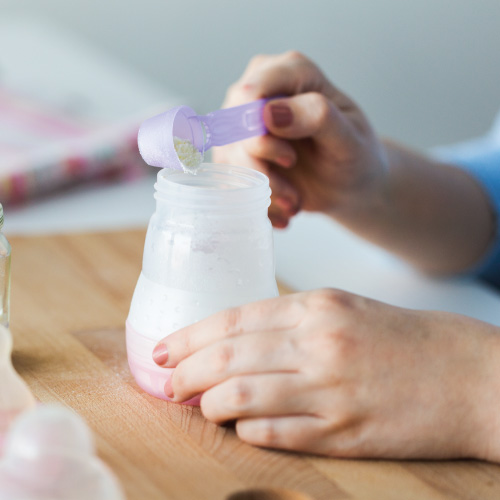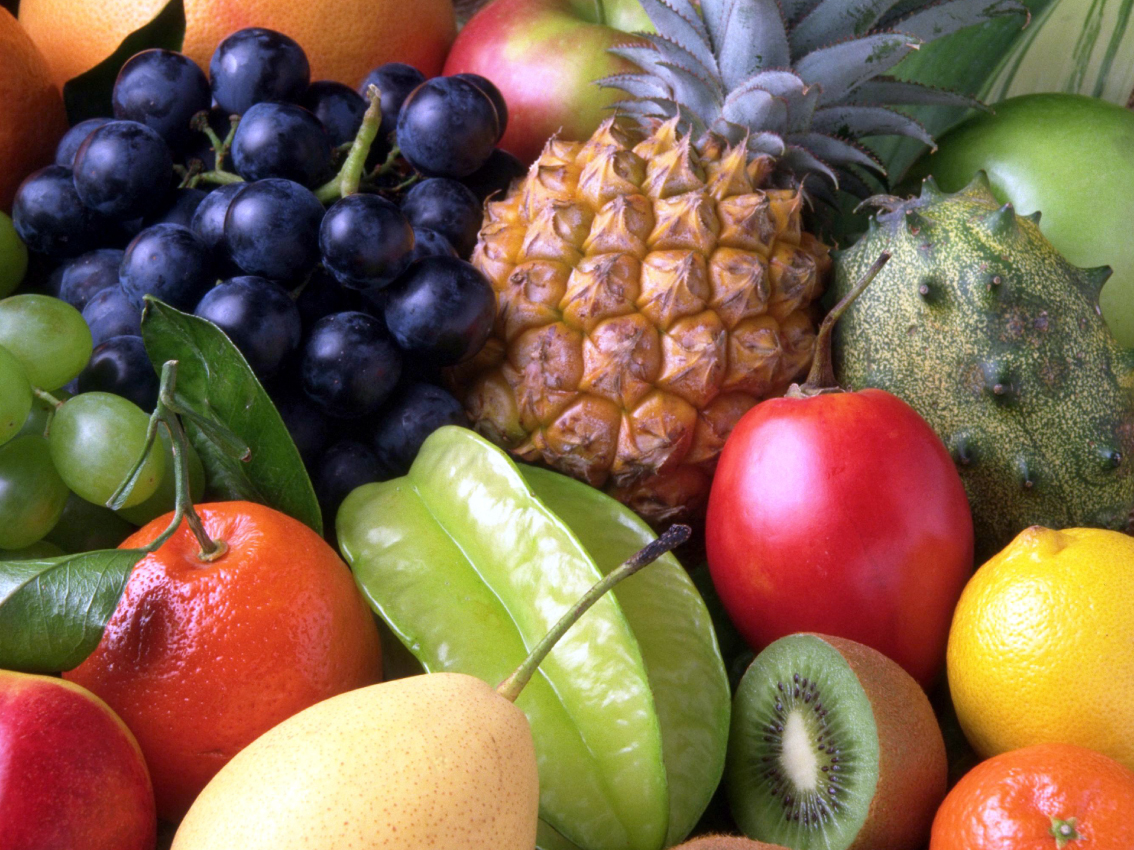What ingredients are in formula milk?

With so many formulas on the market it can be hard to keep up with what ingredients are in each, let alone the effects of these for your baby. So in this blog, we will look at the main, necessary nutrients and ingredients in most formulas, while shining a spot light on those that you should avoid. Thus empowering you to make a confident decision for your baby’s health. I want to say first though, that for those that don’t know my blogs, I believe knowledge empowers parenting and that informed choice is better than blind choice, even if this knowledge may be hard to hear at times, especially when it involves your children. It is fair to say that some of the information below is not an easy read, so if you do want to talk over your baby’s formula situation, please do get in touch for a Let’s Chat Consultation. Now onto the ingredients and empowerment…
Water
Formula is around 85% water, which is great because water is a very important part of your baby’s diet. Saying that, adding more water than the manufacturer recommends can cause some serious issues, so please don't add water to the manufacturer’s instructions.
Carbohydrates
Carbohydrates in formula consist of sugars. Lactose is one of these and is naturally present in some milks, like dairy and goats, while other sugars consist of corn-syrup, table sugar, rice starch, and glucose polymer which is commonly listed at maltodextrin. Prebiotics and probiotics also feature. So let’s look at these one by one.
Corn Syrup
Corn-syrup according to Dr Sears, ‘has no place in infant nutrition’ and I agree. Fructose corn syrup (HFCS) on the labels of formula, is created by manipulating the percentage of fructose in the syrup that is taken from corn. Companies use this because it is cheaper to make than cane sugar, and it's sweeter. The effects of fructose corn syrup is said to be one of the causes of child obesity.
Dr Sears says, in a very well written article on corn syrup, ‘When your baby ingests normal sugars (such as those in breastmilk, fruits, vegetables, or milk-based infant formulas), these sugars stimulate the brain with signals saying, "You've eaten enough. Stop already!" Fructose, however, does not trigger the satiety signals like glucose does, so it's easier to overeat foods and beverages containing HFCS. Overconsumption leads to type II diabetes and heart disease.’ It also may lead to your baby having a sweeter tooth later on in life so if you can, choose formula that has sugar from nature like lactose. Your baby’s body knows how to break this down. Please note, some formula’s list corn syrup without the fructose, this is a lower level of sugar but still best avoided. They have also started calling it ‘glucose sugar’.

Table Sugar
This is the sugar we put in our hot drinks and is labelled as sucrose on formula cans. Sucrose has a high level of fructose in it, and when a baby has sugar the fat cells that form from this keep saying, please give me more.’ Sucrose in baby formula has been banned in Europe. With formula manufacturers not required to list how much sugar is being used in formula, you have to wonder if baby is actually drinking a super sweet milkshake, or something that is actually made to benefit their health. So again, choose nature’s natural sugar, lactose if your baby doesn’t have Galactosemia, which again, is very rare.
Starch
Rice starch is used to thicken formula and is often used in the formula’s that claim to create ‘less spit-up’, or 'have baby sleep through the night better.' For newborns and infants the amalyse enzyme is what breaks down starch and although amylase is in their saliva from birth, this is in very low amounts.
With the natural sugar lactose, babies have a high level of lactase enzyme to help absorb this appropriately, and amylase only plays a very small part in this. Then at six months the pancreas begins to make more amylase1 but this is only produced in small amounts, increasing slowly throughout childhood. Many health professionals around the world cringe at seeing rice starch in formulas, and rightly so. It is not needed, and only places undue pressure on the digestive tract. Add to this that the glycaemic index of rice starch is 100 compared to the natural sugar lactose, which is 45, and you have another reason why you should avoid this in formulas.
Carob Bean Gum
Derived from the carob tree, carob bean gum is another thickner used in formula. Quite simply the known side effects of carob bean gum is abdominal discomfort and gas. So best to avoid for bubs.
Maltodextrin
Maltodextrin is made from wheat and corn, and corn maltodextrin, when broken down more, becomes corn syrup. Maltrodextrin however has less sugar content than corn syrup, but still has the glycermix index of 100, in other words it passes to the blood stream rather quickly. If this is not used it turns to fat cells which again, will have your baby calling out for more sugar while possibly becoming obese – yes, baby obesity is happening and all those rolls on the thighs, wrists, and arms are not cute. They are a health risk. Maltrodextrin has also been linked to bacteria associated intestinal disorders because it suppresses the growth of natural, beneficial probiotics.2,3,4
Probiotics and prebiotics
A probiotic is live bacteria, and a prebiotic is a carbohydrate that can naturally occur in food, or can be added. These are largely new additives to the list of formula ingredients, and at this stage there is little conclusive evidence of the benefits, despite the ever growing list of positive health outcomes. The main point to remember about probiotics is that you can’t mass market them. What might work for you, may not work for your baby. Also, the most common side effect of probiotics is an increase of gas and bloating5 all at a point when digestive discomfort can effect feeding and sleep, which are both important for healthy weight gain.
Proteins
Very briefly, proteins provide calories and amino-acid building blocks that are necessary for your baby’s growth, and in breast milk it is 10-15% on an infant’s daily caloric need. For both formula and breast milk the main proteins are casein and whey, but the kind of casein is different in cows milk formula (the most commonly used formula) than in breast milk. Cow’s milks uses alpha casein, but it is beta casein that is found in breast milk, and goat’s milk formula. Newborns and infants naturally struggle to break down alpha casein resulting in many of the symptoms that are often lumped in with colic and reflux, or mis-diagnosed as dairy or lactose intolerance. You can read more about proteins, their effects and the best formula to choose here.
Fat
Fat in formulas come from vegetable oils including soy, safflower, coconut oils, palm oil and synthetic DHA and ARA. Again, let’s look at these individually…
Soy oil
Soy oil is extracted from soy beans and like soy formula, you should stay away from any formula that uses this as one of their fat ingredients. Not only does soy have a higher phytate content which binds to iron, magnesium, calcium and zinc, limiting their absorption, it is also known to cause flatulence and bloating. The last thing an innocent baby needs to be feeling. In clinic I often take newborns and infants off formula’s that have soy oil in with the result of reduced arching backwards, passing wind and feeding better.
Also, given that most soy grown in the United States is genetically modified and uses pesticides we should all be concerned. One of these pesticides has now been classified as ‘probably carcinogenic to humans by the World Health Organization, and have been found in both breast milk and infant formula.6 So, be on the safe side and avoid soy.
Coconut oil
While on the whole coconut oil is deemed one of the healthier oils to use in formula, it does still come with the side effects of diarrhoea and stomach cramps for some. It is advised to watch the consumption of coconut oil for your child as the safety of it being taken orally for long periods is not known. ,
Palm oil
Breast milks primary fat is palmitic acid and given palm oil is high in palmitic acid they use this to try and mimic breast milk. However, there is are several studies now that show lower fat absorption and lower bone mineral density for newborns to six months of age when fed formula with palm oil, compared to those that are not. While some researchers say this difference is still within ‘normal’ range, I personally believe, why take the risk if you don’t have to.
Synthetic DHA and ARA
Like palmitic acid, docosahexaenoic acid (DHA) and arachidonic acid (ARA) are naturally found in breast milk, and are beneficial for your baby’s brain, neural and eye development.8 The manufactured version of these acids however, are very much considered to be controversial with debate around their safety. DHA and ARA are extracted form fungus and algae using a petroleum-based solvent, which has been found to be hazardous to the nervous system and is a neurotoxin, poison, to rats in both developing and mature nervous tissue.9

In 2014 a study published in the International Breastfeeding Journal stated that ‘adverse reactions are already on record for DHA and ARA and the FDA does not assess the safety, or health impacts of fatty acid additives to infant formula before they are marketed or afterward. Rather than making its own independent assessments, the FDA accepts the manufacturers’ claims regarding their products’ safety and effectiveness.’9 Horrifically in my mind, this is actually the case with a lot of the newer ingredients in formula. As one person put on a formula thread I was reading, ‘given many of the FDA committee are in bed with pharmaceutical companies, it’s not surprising they don’t regulate formula ingredients that well.’ According to an article by the Journal of the National Cancer Institute, that comment holds much truth. At least four members of the FDA board need to be from the industry, with the remainder ten members being open to consideration.10 Oh, and coming back to manufactured DHA and ARA, there is also ‘a lack of proven benefits for normal, full term infants.’11
Vitamins
According to Robert Bargar, MD, ‘There are four fat-soluble vitamins (A, D, E, and K) and several water-soluble vitamins. These include the B vitamins, B1 (thiamine), B2 (riboflavin), B3 (niacin), B6 (pyridoxine), and B12 (cobalamin), as well as folate and vitamin C and pantothenic acid, and biotin. These vitamins have been added to infant formulas to ensure proper nutrition. Unless otherwise directed by their pediatricians, routine vitamin supplementation is not necessary for healthy full-term infants taking formulas.’ 12
Minerals
‘Minerals include calcium, phosphorus, magnesium, iron, iodine, copper, and zinc. Trace elements of manganese, chromium, selenium, and molybdenum are also included in most formulas. Therefore, there is no evidence that mineral supplementation is necessary for healthy formula-fed, full-term infants.’13
In Summary
Being aware of ingredients in formula is in my opinion vital for every parent that uses formula. It is scary that there is no regulation for some of these. No protection for our young, so we must be their protector by doing our homework, and while that may sound a little like ‘conspiracy theory’ language, it is simply the truth. Formula is evolving so fast these days that it can be hard to keep up when you are a busy parent.
All formulas on the market provide the basic nutrition a healthy baby needs, it is the ingredients list that you need to be looking at. Take the time to look at these, and then consult with your health professional for further guidance before changing formula. But be aware, they may not know all the effects of some of these ingredients either. There is a lot of marketing that keeps telling us, time and time again that all formula is safe, and we don’t have to be concerned.








